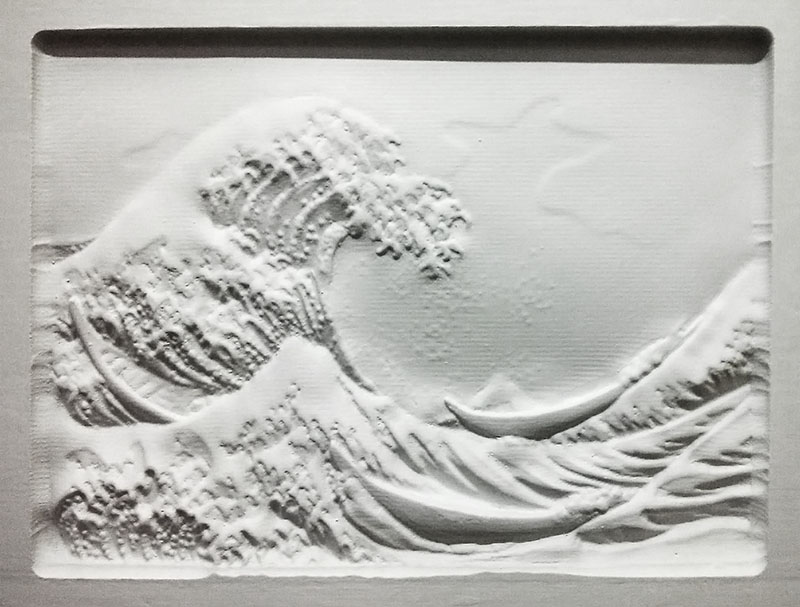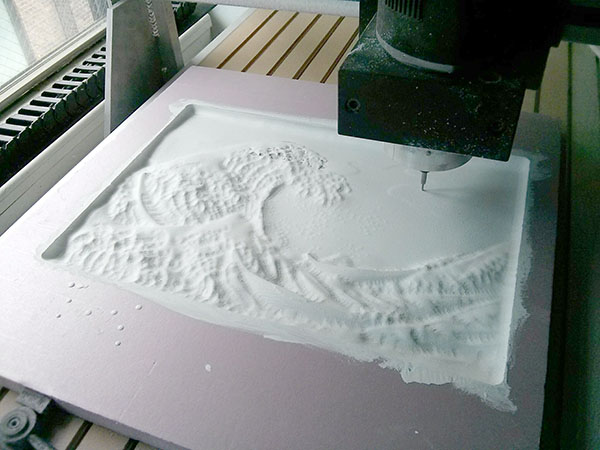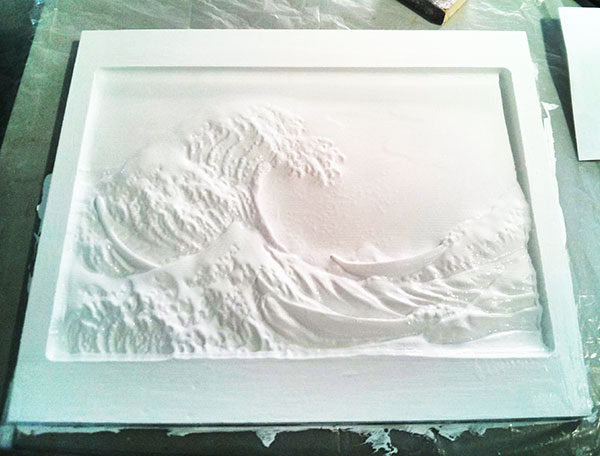
The Great Wave off Kanagawa (神奈川沖浪裏 Kanagawa Oki Nami Ura, literary translated “Under a Wave off Kanagawa”), is the piece made by Japanese artist Katsushika Hokusai. It was originally made with the print technique called Ukiyo-e, where the painter’s drawing from the paper would be engraved in the wooden panel by carving away the relief of the lines from the image. With all the necessary plates (woodblocks) made, one for each colour, a printer would produce the print by placing the printing paper on each inked plate consecutively.
This woodblock is one of the most recognized works of Japanese art in the world. There are various copies of this work throughout the world, and this one is in Metropolitan Museum of Art in New York.
Also known as The Great Wave or simply The Wave.
There are also many derivatives of the work, made with different approaches, techniques and mediums. This is possible because the work of art itself is in the public domain.
Process
This is another approach inspired by this work. What would it look like if it was made in bas-relief technique? I started from the basic image, drew different layers of masks and sculpted the rest in ZBrush.
Since it is a 2.5D relief, it can be machined in any material, like plaster, bronze, wood, using standard 3-axis CNC Router. This one is two-pass CNC machined in foam.


